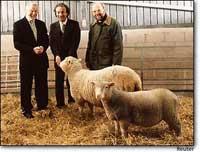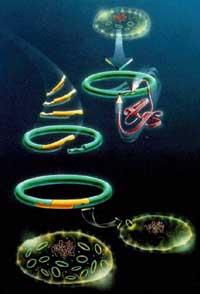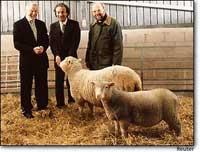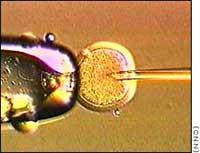What can stop human cloning?
2001/08/08 Roa Zubia, Guillermo - Elhuyar Zientzia
Three factors can end human cloning.

These days two groups have said they want to begin human cloning. The first group is led by fertility expert Panos Zavos and the second by the founder of a sect, Claude Vorilhorne, known as Rael. Zavos joins the gynecologist Severino Antino. The latter, moreover, has stated that if the laws of all peoples prohibit cloning, it will enter a boat and conduct experiments in international waters.
Numerous arguments have been made against attempts to clone man. But it does not seem that ethical debate parallels this process. Therefore, many prestigious scientists want to use scientific arguments such as Ian Wilmun, founder by cloning of the Dolly sheep, or Ryuzo Yanagimachi, the scientist who first cloned a mouse.
From a scientific point of view, the main argument is that the current cloning methodology offers little performance. Two methods have already been used for copying a being: somatic core transfer and massive cell division. The second is an artificial version in which twin children are created and cannot be made from an adult animal cell.
Therefore, only the first of the two can serve to make the cloning of the older man. It is a very complex process. The genetic material must be extracted from a cell of the human being who wants to clone; it is to remove the DNA from the nucleus to a woman's oculus and to introduce into it the one who wants to clone, that is, to replace the nuclei. However, for the foreign genome to penetrate the nucleus of the egg it is necessary to excite by electric current. Finally, the entrance of the egg to the woman gives rise to the clone after natural pregnancy.

Each of these steps is unlikely to be effective, so to get a clone you have to try to fertilize hundreds of eggs. For example, the Dolly sheep was the only embryo of 277 successful sessions. In addition, most of those born die in the short term due to malformations. Many scientists believe that these malformations are the result of the passage of the application of electric current, since the DNA introduced so sideways can be damaged by electricity.
However, the cloned animal is not exactly the same as the initial. The DNA comes out of the nucleus to make cloning, but not that of the mitochondria. Therefore, the clone will also have a genetic footprint of pregnant female. In addition, specifically, it is not clear what characteristics are inherited, that is, in the case of the human being, will the child have the same tendency in terms of taste, identity, etc. ?
However, cloning is not everyone's pleasure and, according to experts, only three factors could prevent the birth of clones: the unforeseen difficulties of the process (for example, if the egg is not applied to women), if the international ban on cloning is signed and the possible future market disappears (if there are no cloning parents).
It does not seem that at the moment international legislation against clones can be created. In short, experts from all walks of life suspect that human cloning will be an indispensable step in science.

Gai honi buruzko eduki gehiago
Elhuyarrek garatutako teknologia






